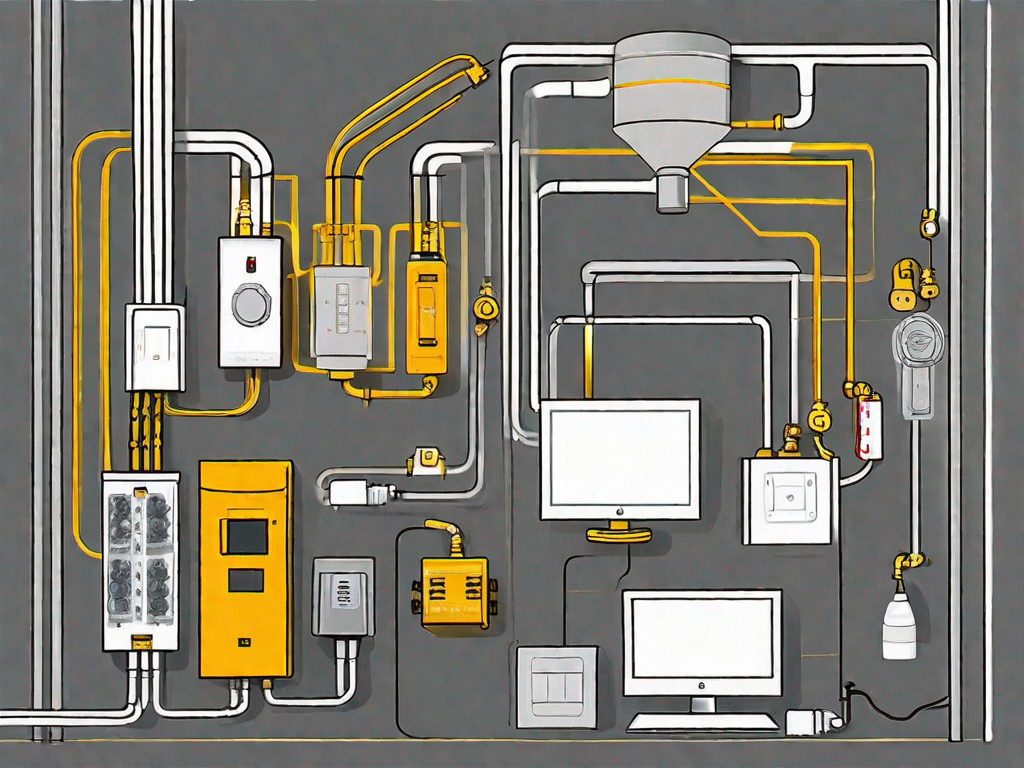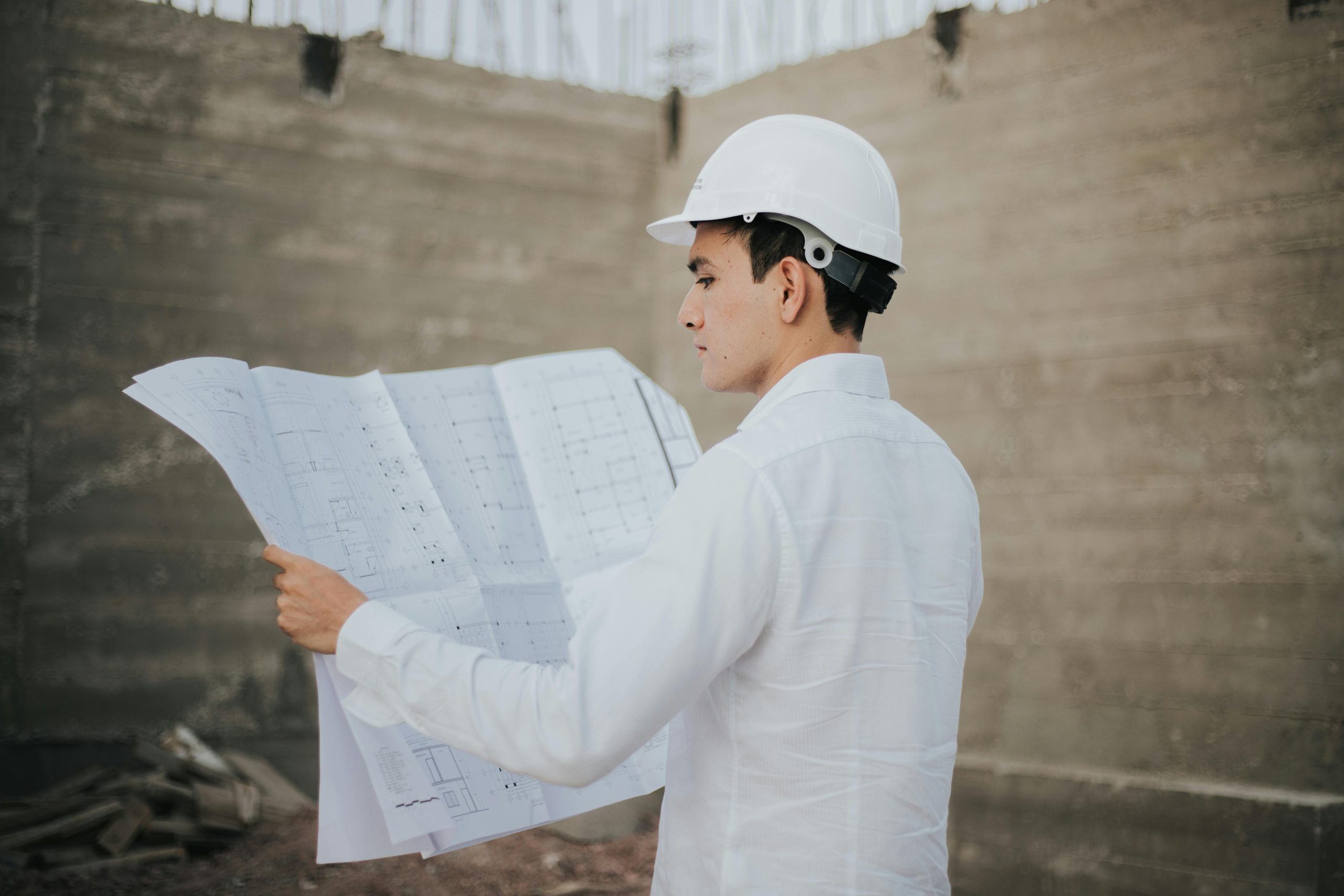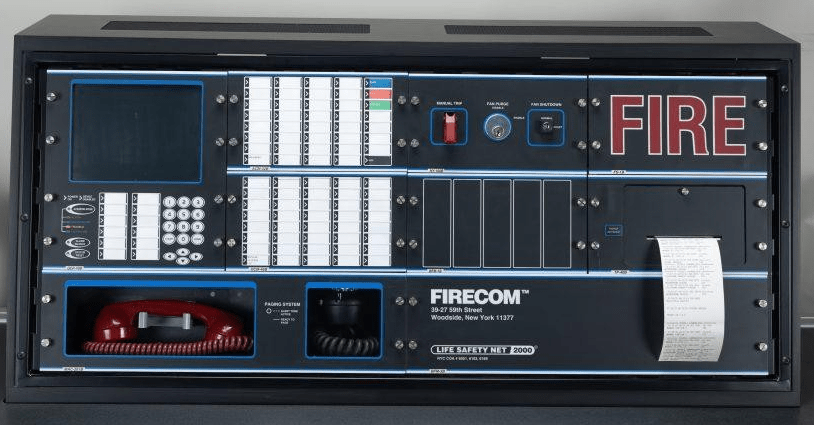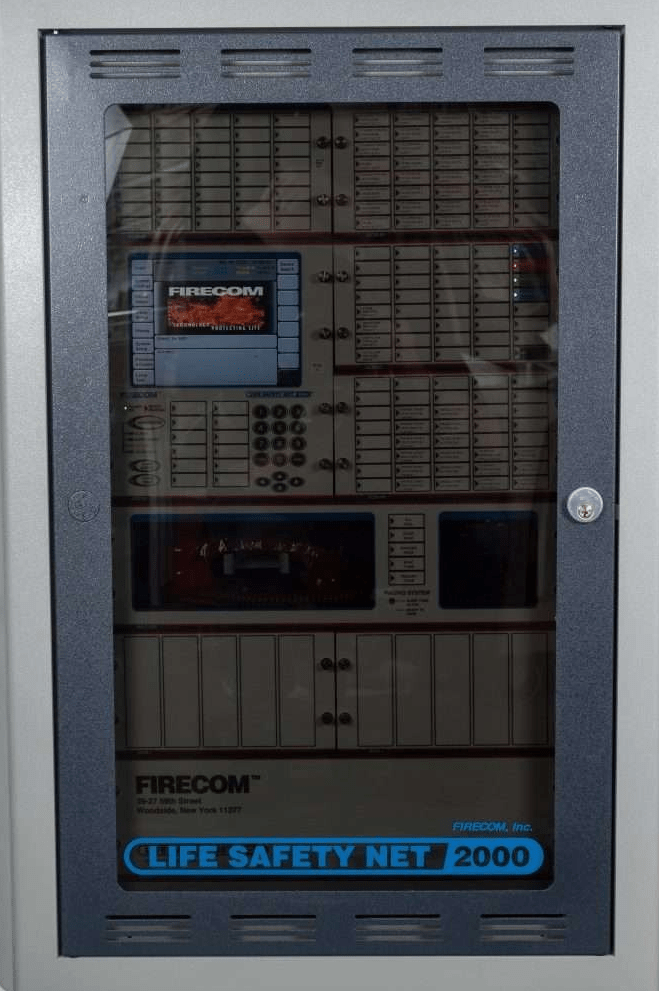EST4 system installation best practices

Installing the EST4 system correctly is crucial for ensuring its optimal performance and reliability. In this article, we will guide you through the best practices for installing the EST4 system, from understanding its features to troubleshooting common installation issues. By following these guidelines, you can ensure a seamless installation process and a well-functioning system for years to come. Let’s dive in!
Understanding the EST4 System
The EST4 system is a state-of-the-art fire alarm and emergency communication system designed to safeguard lives and property. It incorporates advanced features that enhance detection, notification, and response during emergencies. Familiarizing yourself with the key features of the EST4 system is essential before proceeding with its installation.
The EST4 system is not just your ordinary fire alarm system. It is a comprehensive solution that combines cutting-edge technology with intelligent communication capabilities to provide the highest level of fire safety. With its advanced features, the EST4 system ensures that you are well-prepared to handle any emergency situation that may arise.
Key Features of the EST4 System
The EST4 system offers an array of features that make it a reliable solution in fire safety. These include:
- Advanced Detection Technology: The EST4 system uses cutting-edge detectors that provide accurate and timely fire detection. These detectors are equipped with state-of-the-art sensors that can quickly identify the presence of smoke, heat, or flames, ensuring early detection and rapid response.
- Intelligent Communication: It enables effective communication between various system components, facilitating quick response and decision-making. The EST4 system uses a sophisticated network infrastructure that allows seamless communication between different devices, such as detectors, control panels, and notification devices. This ensures that critical information is relayed instantly, enabling swift action to be taken.
- Enhanced Notification: The system is equipped with high-decibel horns, strobes, and voice messaging capabilities for clear and audible alerts. In the event of a fire, the EST4 system will sound a loud alarm, activate flashing lights, and broadcast clear voice messages to alert occupants and guide them to safety. These notification devices are strategically placed throughout the building to ensure maximum coverage and effectiveness.
- Flexible Configuration Options: It offers customization options to adapt to specific building requirements and fire safety regulations. The EST4 system can be tailored to meet the unique needs of any facility, whether it is a small office building or a large industrial complex. It can be configured to comply with local fire codes and regulations, ensuring that your building is fully protected and in compliance with the law.
With these key features, the EST4 system provides a comprehensive fire safety solution that goes beyond basic fire detection. It is designed to minimize false alarms, maximize response time, and ensure the safety of occupants and property.
Importance of Proper Installation
Proper installation is vital to ensure the EST4 system functions optimally and meets safety standards. An improperly installed system can lead to false alarms, unreliable operation, or even failure during critical situations. By following the recommended installation practices, you can minimize the risk of system malfunctions, safeguard lives, and protect valuable assets.
During the installation process, it is important to work with certified professionals who have experience in installing fire alarm systems. They will ensure that all components are installed correctly, wiring is done properly, and the system is tested thoroughly to ensure it is functioning as intended.
Additionally, proper installation includes conducting a thorough site survey to identify the optimal locations for detectors, control panels, and notification devices. This ensures that the system provides maximum coverage and effectiveness in detecting and alerting occupants of a fire.
Furthermore, regular maintenance and inspections are essential to keep the EST4 system in optimal condition. This includes testing the system regularly, replacing batteries as needed, and conducting routine inspections to identify any potential issues or malfunctions.
By investing in proper installation and maintenance, you can have peace of mind knowing that your EST4 system is reliable, effective, and ready to protect lives and property in the event of a fire.
Pre-Installation Considerations for EST4 System
Before embarking on the installation process, it is crucial to evaluate your space and gather the necessary tools and equipment. These preparatory steps will help streamline the installation and ensure a successful outcome.
Evaluating Your Space
Determine the layout and size of your space to identify the optimal locations for mounting detectors, control panels, and other system components. Consider the building’s structure, environmental conditions, and any specific fire safety regulations or codes in effect.
When evaluating your space, it is important to take into account the different areas within the building that require fire detection. This includes not only the main areas such as hallways and rooms, but also areas that are often overlooked, such as storage rooms or utility closets. By thoroughly assessing your space, you can ensure that the EST4 system is installed in the most effective and comprehensive manner.
Additionally, consider the specific requirements of your building. For example, if you are installing the EST4 system in a hospital, you may need to take into account the unique challenges of a healthcare environment, such as the presence of medical gases or the need for specialized detectors in certain areas.
Gathering Necessary Tools and Equipment
Ensure you have all the tools and equipment required for the installation. This may include screwdrivers, wire strippers, pliers, conduit, mounting brackets, and cables. Having everything at hand before commencing the installation will save time and effort.
It is also important to ensure that you have the necessary documentation and manuals for the EST4 system. Familiarize yourself with the installation instructions and any specific guidelines provided by the manufacturer. This will help you understand the installation process and avoid any potential pitfalls.
Furthermore, consider the availability of additional resources that may be required during the installation. This could include additional manpower, specialized equipment, or support from the manufacturer’s technical team. By planning ahead and ensuring that you have all the necessary tools, equipment, and resources, you can minimize any potential delays or complications during the installation process.
Step-by-Step Guide to EST4 System Installation
Now that you have prepared adequately, let’s walk through the step-by-step installation process for the EST4 system. Installing a fire alarm system requires careful attention to detail and following the manufacturer’s instructions to ensure proper functionality and reliability.
Unpacking and Inspecting the EST4 System
Begin by unpacking the EST4 system components and carefully inspecting them for any visible damage. It is crucial to ensure that all the necessary components are present and in good condition before proceeding with the installation. Check each component, including the control panels, detectors, wiring, and other accessories, to ensure they are free from any defects or signs of wear and tear.
Inspecting the components is an essential step as it helps identify any potential issues that could affect the system’s performance. By thoroughly examining each item, you can address any concerns before proceeding with the installation, saving time and preventing future complications.
Setting Up the EST4 System
Once you have confirmed that all the components are in good condition, it’s time to start setting up the EST4 system. Begin by mounting the control panels, detectors, and other components using the appropriate brackets and hardware provided by the manufacturer. It is crucial to follow the manufacturer’s instructions to ensure correct placement and secure installation.
When mounting the control panels, consider factors such as accessibility, visibility, and proximity to power sources. Ensure that the panels are easily accessible for maintenance purposes while being discreetly placed to avoid tampering or accidental damage. Additionally, make sure the control panels are visible and easily identifiable in case of an emergency.
As you proceed with the installation, take care to route the wiring neatly and avoid any obstructions. Properly organized wiring not only enhances the system’s aesthetics but also makes troubleshooting and maintenance more manageable in the future. Use cable management solutions such as conduits or cable trays to keep the wiring organized and protected from potential damage.
Configuring the EST4 System
After physically installing the components, it’s time to configure the EST4 system to meet your specific requirements. This step involves programming the control panel, setting up zones, and configuring detection parameters. It is crucial to follow the system’s user manual or contact the manufacturer for detailed instructions on the configuration process.
During the configuration process, you will have the opportunity to customize the system’s settings according to your building’s layout and specific needs. This includes defining zones, assigning devices to specific areas, and adjusting detection parameters such as sensitivity and response time. Take the time to carefully review each configuration option and make informed decisions that align with your fire safety goals.
Additionally, consider consulting with a fire safety professional or the manufacturer’s technical support team during the configuration process. Their expertise can provide valuable insights and ensure that the system is optimized for maximum effectiveness.
Remember, the EST4 system’s configuration is a critical step that directly impacts its performance. Take the time to thoroughly understand the configuration options and make informed decisions to ensure the system operates flawlessly in the event of a fire.
Troubleshooting Common Installation Issues
Even with meticulous planning and execution, installation issues may arise. Here, we address two common problems that can occur during the installation of the EST4 system.
Addressing Power Supply Problems
If the system experiences power supply issues, such as intermittent power loss or improper voltage levels, it can lead to system malfunctions. This can be a frustrating problem to encounter, but there are steps you can take to address it.
First, ensure all power connections are secure. Check that all cables are properly plugged in and that there are no loose connections. Sometimes, a simple loose cable can cause power supply problems. If everything seems to be connected properly, move on to the next step.
Verify that the power source meets the required specifications. Check the voltage levels and compare them to the system’s requirements. If the voltage is too low or too high, it can cause issues with the system’s performance. In such cases, you may need to consult an electrician or an expert in power supply to rectify the problem.
If the problem persists even after checking the power connections and verifying the voltage levels, it may be time to consult a professional technician. They will have the expertise to identify and rectify the root cause of the power supply problem. Don’t hesitate to seek professional help if needed, as they can save you time and frustration in troubleshooting the issue.
Solving Configuration Errors
If you encounter configuration errors during the setup process, don’t panic. Configuration errors are common and can usually be resolved with some troubleshooting.
First, carefully review the programming details. Double-check that all the settings and configurations are entered correctly. Sometimes, a simple typo or oversight can cause a configuration error. Take your time to go through each step and ensure everything is accurate.
If you’re unsure about a particular configuration or setting, consult the system’s user manual or online resources for troubleshooting guidance. Manufacturers often provide detailed instructions and troubleshooting tips to help users resolve common configuration errors. Take advantage of these resources to find a solution.
In some cases, a simple adjustment or reprogramming may resolve the configuration error. Try making small changes to the settings and see if it resolves the issue. Remember to document any changes you make, so you can easily revert them if needed.
If you’ve exhausted all troubleshooting options and the configuration error persists, it may be time to reach out to the manufacturer’s technical support. They have a team of experts who can provide personalized assistance and guide you through the troubleshooting process. Don’t hesitate to contact them for help, as they are there to support you.
Maintaining Your EST4 System Post-Installation
Installing the EST4 system is just the first step in ensuring fire safety. Regular maintenance is crucial to keep the system functioning optimally and address any emerging issues promptly.
Proper maintenance of the EST4 system involves a series of checks, updates, and professional intervention when necessary. By following these best practices, you can ensure a reliable, efficient, and compliant fire alarm and emergency communication system.
Regular System Checks and Updates
Conducting periodic checks is essential to verify the overall functionality of the EST4 system. These checks involve performing diagnostic tests and updating firmware or software as needed. By staying up-to-date with the latest advancements, you can ensure that your system is equipped with the most efficient and effective features.
During these regular inspections, it is important to pay attention to any potential problems that may arise. By identifying issues early on, you can take proactive measures to address them before they escalate. This includes checking for any signs of wear and tear, loose connections, or abnormal system behavior.
When to Seek Professional Help
While routine maintenance can prevent many issues, some complexities may require professional intervention. If you encounter problems beyond your expertise or if the system exhibits persistent malfunctions, it is crucial to seek the assistance of a qualified professional with experience in EST4 system maintenance.
These professionals have the necessary expertise to troubleshoot and resolve any issues that may arise. They can perform in-depth diagnostics, identify the root cause of the problem, and implement the appropriate solutions. By relying on their knowledge and experience, you can ensure that your EST4 system is always in optimal condition.
Remember, the safety of lives and property relies on the proper functioning of the EST4 system. By following the recommended maintenance practices, you are taking the necessary steps to protect and safeguard against potential fire hazards.
It is important to consult the installation manual provided by the manufacturer for detailed instructions specific to your system model. These manuals provide step-by-step guidance on maintenance procedures, ensuring accuracy and precision during the process.
By prioritizing the maintenance of your EST4 system, you can have peace of mind, knowing that you have taken the necessary steps to protect lives and property. Regular checks, updates, and professional assistance will ensure that your system remains reliable, efficient, and compliant with fire safety regulations.


